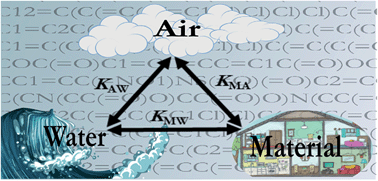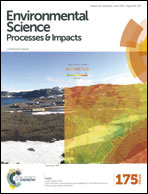Screening-level models to estimate partition ratios of organic chemicals between polymeric materials, air and water†
Abstract
Polymeric materials flowing through the technosphere are repositories of organic chemicals throughout their life cycle. Equilibrium partition ratios of organic chemicals between these materials and air (KMA) or water (KMW) are required for models of fate and transport, high-throughput exposure assessment and passive sampling. KMA and KMW have been measured for a growing number of chemical/material combinations, but significant data gaps still exist. We assembled a database of 363 KMA and 910 KMW measurements for 446 individual compounds and nearly 40 individual polymers and biopolymers, collected from 29 studies. We used the EPI Suite and ABSOLV software packages to estimate physicochemical properties of the compounds and we employed an empirical correlation based on Trouton's rule to adjust the measured KMA and KMW values to a standard reference temperature of 298 K. Then, we used a thermodynamic triangle with Henry's law constant to calculate a complete set of 1273 KMA and KMW values. Using simple linear regression, we developed a suite of single parameter linear free energy relationship (spLFER) models to estimate KMA from the EPI Suite-estimated octanol–air partition ratio (KOA) and KMW from the EPI Suite-estimated octanol–water (KOW) partition ratio. Similarly, using multiple linear regression, we developed a set of polyparameter linear free energy relationship (ppLFER) models to estimate KMA and KMW from ABSOLV-estimated Abraham solvation parameters. We explored the two LFER approaches to investigate (1) their performance in estimating partition ratios, and (2) uncertainties associated with treating all different polymers as a single “bulk” polymeric material compartment. The models we have developed are suitable for screening assessments of the tendency for organic chemicals to be emitted from materials, and for use in multimedia models of the fate of organic chemicals in the indoor environment. In screening applications we recommend that KMA and KMW be modeled as 0.06 × KOA and 0.06 × KOW respectively, with an uncertainty range of a factor of 15.


 Please wait while we load your content...
Please wait while we load your content...